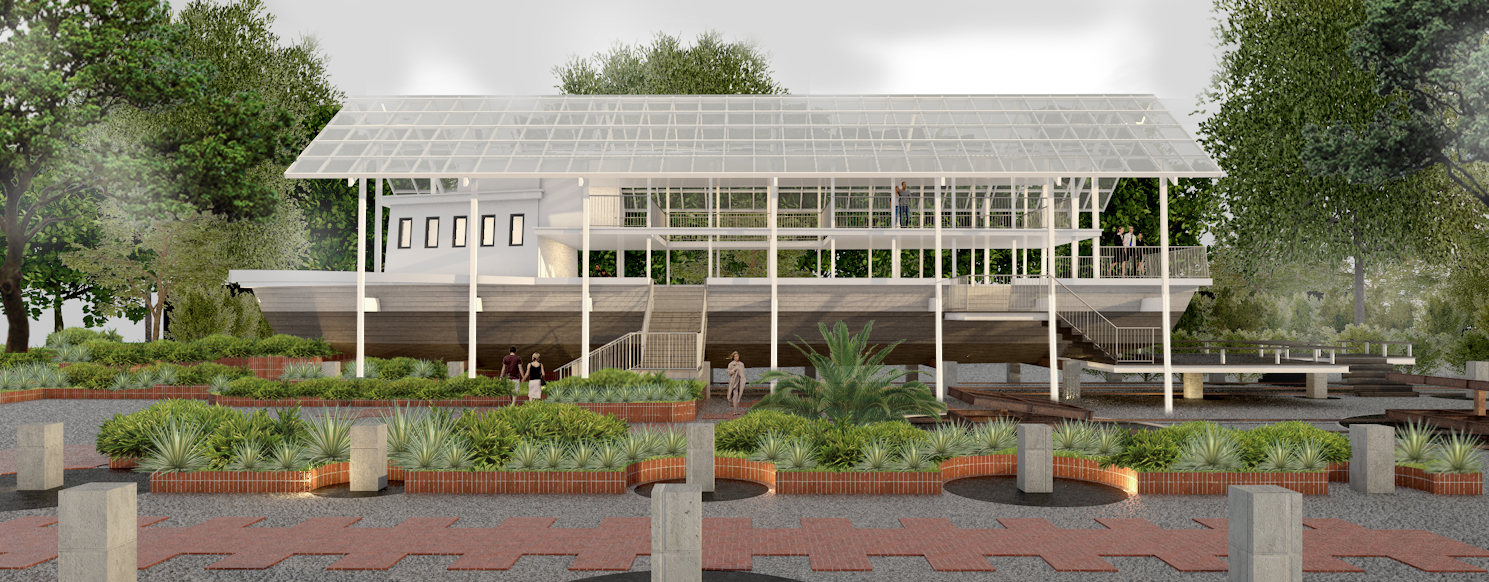
Architecture Faculty, Rangsit University
Sasikan Srisopon, Ph.D., Pongsit Rueangsawat, Parisa Musigakama, Ph.D. and Aamaal Phakdeetham Chimvilaisup
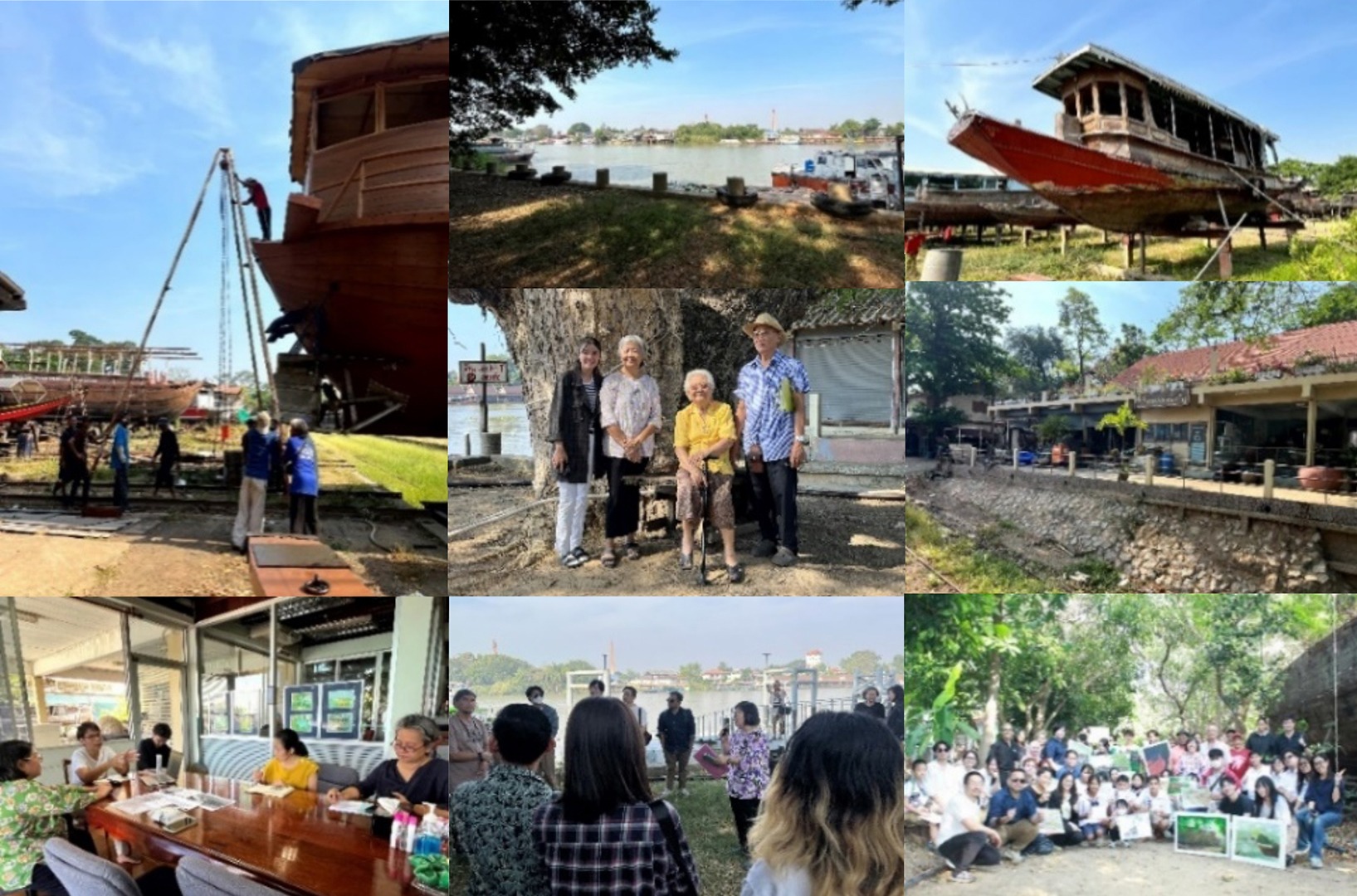
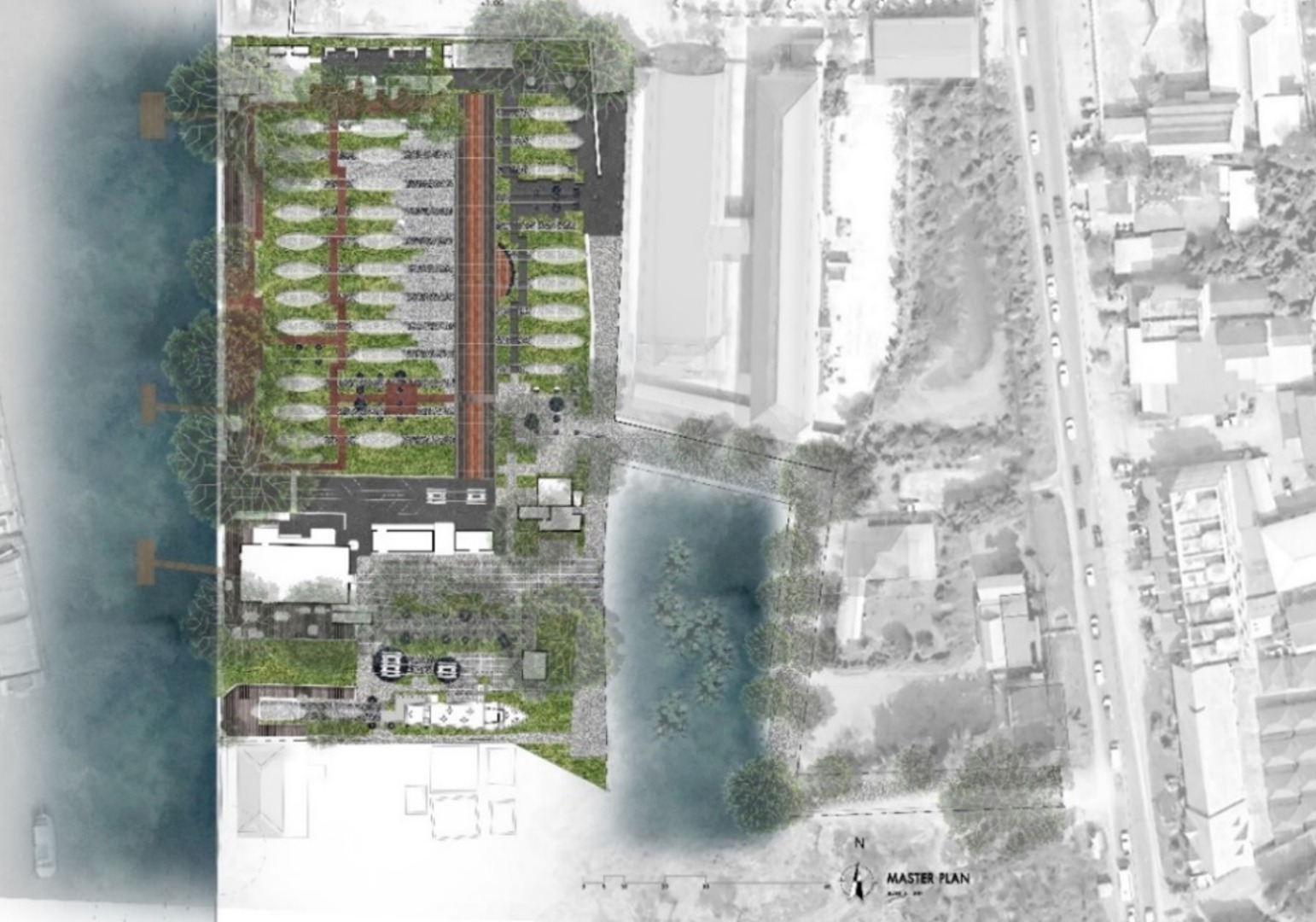
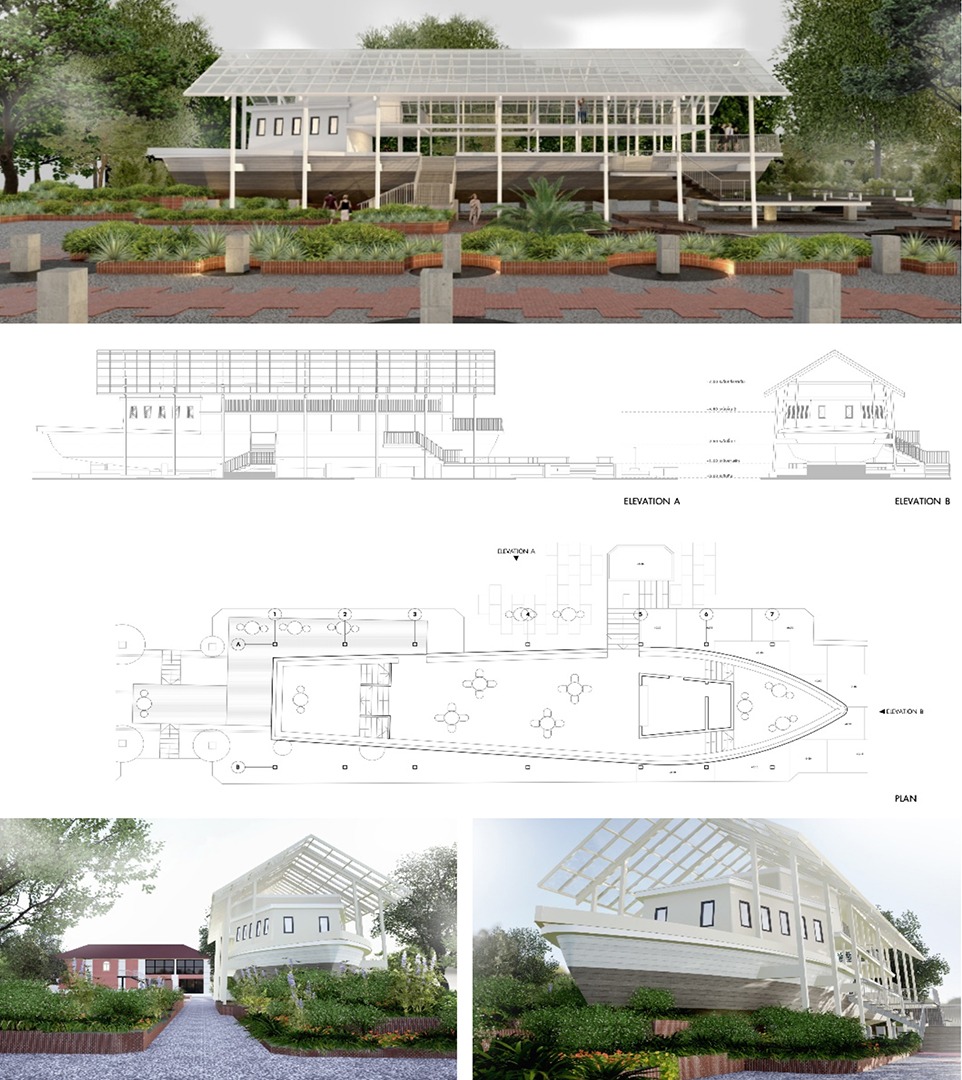
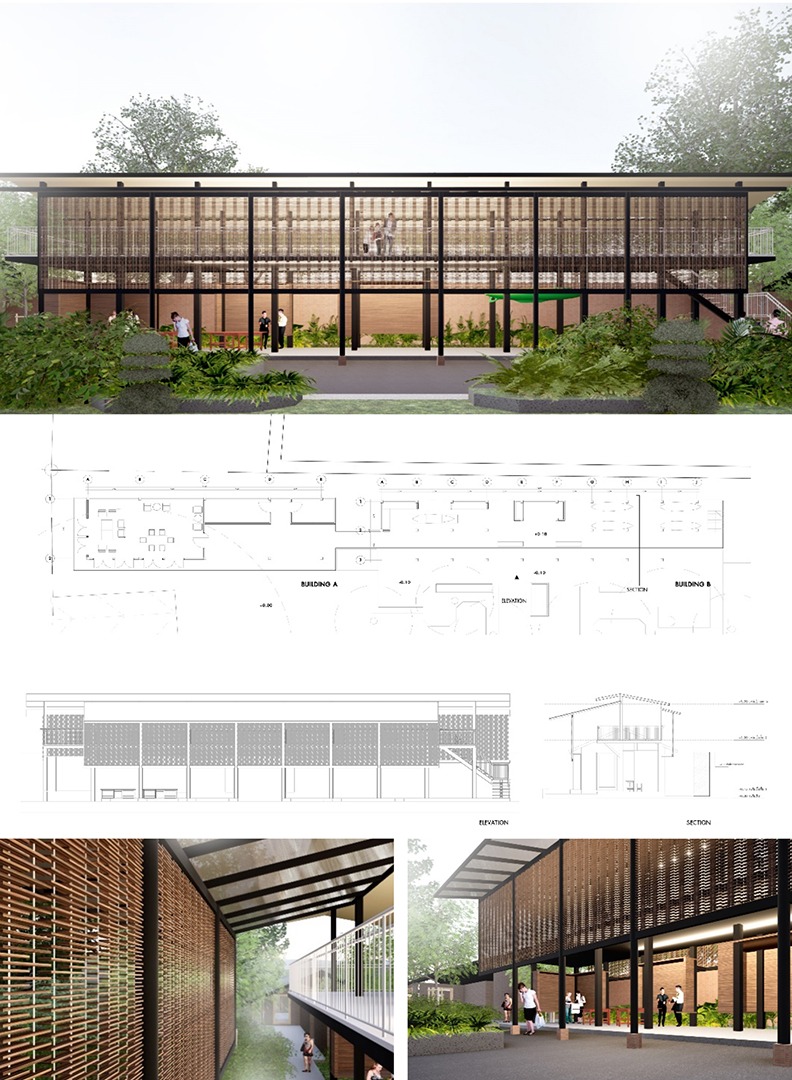

Abstract :
The Sri Charoen Shipyard, located in Phra Nakhon Si Ayutthaya, Thailand, is one of the oldest privately-owned wooden boat shipyards, reflecting the traditional craftsmanship and cultural identity of riverside communities. However, the site faces serious challenges due to environmental degradation, economic transformation, and the decline of traditional boatbuilding knowledge. Neglect, floods, and changes in transportation technologies have accelerated the loss of cultural significance. This study aims to investigate the potential for revitalizing the shipyard into a cultural heritage learning center through creative conservation and adaptive reuse strategies. By applying a participatory action research methodology, this project offers a concrete model involving the restoration of existing structures, creation of a living museum, educational boatbuilding workshops, a riverside boat café, and a creative market space to foster the local creative economy. The findings demonstrate how art-based learning, sustainable design, and community participation can effectively preserve and renew the cultural landscape of Sri Charoen Shipyard, offering a model adaptable to similar riverside heritage contexts.
Objectives :
- To conserve and revitalize the Sri Charoen Shipyard within the context of ongoing socio-environmental changes through creative conservation principles.
- To propose design strategies that maintain local wisdom and cultural heritage within the Shipyard area.
- To promote community engagement and the development of networks through arts and cultural activities.
Conceptual Framework :
Creativity has always been at the core of human activity, driving imagination, innovation, and sustainable practices. Conservation itself is inherently creative, often requiring solutions to restore lost or damaged cultural elements (Triaes et al., 2023). This project adopts a “Creative Conservation and Development” approach, merging heritage preservation with adaptive reuse for contemporary purposes across four key dimensions:
- Historical and Cultural: interpreting the shipyard’s boatbuilding legacy and its contribution to local identity.
- Environmental: promoting ecological sustainability through the use of local materials and eco-friendly design.
- Creative Economy: developing spaces that support cultural tourism and community-based economic activities.
- Community Participation: fostering youth and community involvement in cultural preservation through educational and artistic initiatives.
The integration of these four dimensions forms the basis for the design approach at the Sri Charoen Shipyard, enabling it to adapt to the current context while remaining resilient to future changes. This integrative strategy ensures the preservation of the site’s cultural significance and fosters an environment conducive to learning and community participation. The conceptual framework is supported by the following key principles:
Cultural and Historical Perspective
This perspective informs a design approach that safeguards the original identity and heritage of the Sri Charoen Shipyard. While preserving its original function as a specialized wooden boat shipyard, the design also allows for the integration of new and contemporary activities, ensuring functional flexibility.
Learning and Community Engagement Perspective
This concept promotes the creation of interactive spaces that facilitate active engagement from both local residents and visitors. By enabling participation in cultural and educational activities, the design supports knowledge dissemination and ensures the continuity of the site’s valuable cultural heritage.
Sustainability and Environmental Perspective
The design is driven by sustainable principles, prioritizing the use of reclaimed and locally-sourced materials from the shipyard and its surrounding areas. This approach minimizes environmental impacts while contributing to long-term ecological balance and resilience.
Together, these perspectives provide a holistic framework that integrates cultural conservation with sustainable development, ensuring the shipyard becomes a dynamic cultural hub for the local community and future generations.
Process / Methodology :
This project is part of an action research study entitled “The Guidelines for Area Development and Architectural Design in the Sri Charoen Shipyard, Phra Nakhon Si Ayutthaya Province to be a Learning Area for Living Heritage.” The research adopts a participatory methodology that emphasizes collaboration among the dockyard’s owners, academic networks, and both local and external artists. The research and design process was structured into four principal stages:
1. Data Collection: This phase involved an extensive review of the historical and socio-cultural context of the Sri Charoen Shipyard. Archival research, on-site surveys, and semi-structured interviews with key stakeholders, including the Shipyard owners and community members, were conducted to gather detailed insights. This process aimed to map out the cultural value of the shipyard and its relevance to local identity (Ashworth & Tunbridge, 1990)
2. Problem and Opportunity Analysis: The second phase focused on identifying and analyzing the current challenges and development opportunities. Key considerations included environmental degradation, socio-economic transitions, and community aspirations. Problem and opportunity analysis was employed to assess the feasibility of conservation and adaptive reuse initiatives, supporting the formulation of responsive design strategies tailored to the shipyard’s unique context
3. Preliminary Spatial and Architectural Design: Synthesizing the findings from the previous stages, this phase proposed a preliminary design that integrates physical, historical, and cultural characteristics of the site. The design strategy embraced creative conservation principles to revitalize the space while enhancing its usability for new functions. The framework was developed based on three core concepts: (1) Cultural and Historical Continuity, (2)Community Engagement through participatory design, and (3)Sustainable Design Practices, emphasizing the use of local and recycled materials to minimize environmental impact (Avrami, Mason, & de la Torre, 2000).
4. Evaluation and Recommendations: The final phase incorporated participatory evaluation through community workshops and expert consultations. These sessions provided critical feedback, which was integrated into the refinement of the architectural and spatial designs. The collaborative process ensured that the final proposal responded directly to the needs of stakeholders and strengthened the site’s cultural resilience.
The holistic and participatory methodology applied in this project not only addresses the site’s physical revitalization but also promotes sustainable heritage management and community empowerment.
Techniques and Materials :
Techniques: Architectural drawings, 3D modeling, community mapping, and participatory workshops were employed.
Materials: Reclaimed hardwood from decommissioned boats and anti-corrosive steel were selected to preserve authenticity, ensure structural resilience, and minimize environmental impact.
Rationale: The reuse of original boat materials symbolizes cultural continuity and sustainability, while modern structural enhancements address long-term durability and climate resilience, particularly flood risks along the riverbanks.
Result / Conclusion :
- The restoration and reinforcement of the original shipyard structures, ensuring durability through the use of context-appropriate materials such as hardwood and anti-corrosive steel for long-term usage.
- The development of functional spaces that support learning and the creative economy. These include: A living museum showcasing the boatbuilding process and local craftsmanship (Kobchai, 2022);
- A training center for traditional and modern boatbuilding skills, utilizing elevated structures to mitigate flood risk and employing reclaimed boat materials to enhance sustainability;
- A boat cafe, designed from repurposed boats adjacent to the Baan Hollanda Museum, emphasizing passive ventilation and natural lighting;
- A creative market area that promotes local entrepreneurship, fostering a creative economy that respects and enhances the site’s cultural identity (Throsby, 2010).
- Landscape design that integrates ecological restoration and riverside biophilic elements. The design prioritizes the use of native plant species, ecological balance, and pedestrian-friendly pathways that link all areas, promoting walkability and cycling.
- Community and youth engagement through art-based initiatives and workshops to foster cultural continuity and broaden local participation in heritage conservation.
References :
Ashworth, G., & Tunbridge, J. (1990). The Tourist–Historic City. Belhaven Press.
Avrami, E., Mason, R., & de la Torre, M. (2000). Values and heritage conservation. Getty Conservation Institute.
Duong, B. H. (2021). Arts and culture in the time of disruption: Building back better with culture. The Fine & Applied Arts Journal, 14(2), 1–8.
Kobchai, R. (2022). Living museum design guidance for cultural tourism: Intakhil Village, Mae Taeng, Chiang Mai. Chiang Mai Rajabhat University.
Smith, L. (2006). Uses of heritage. Routledge.
Throsby, D. (2010). The economics of cultural policy. Cambridge University Press.
Triaes, R., Nogueira, A., & Chasqueira, A. (2023, September). The power of creativity in nurturing sustainable development [Conference paper]. Retrieved from https://www.researchgate.net/publication/382115060